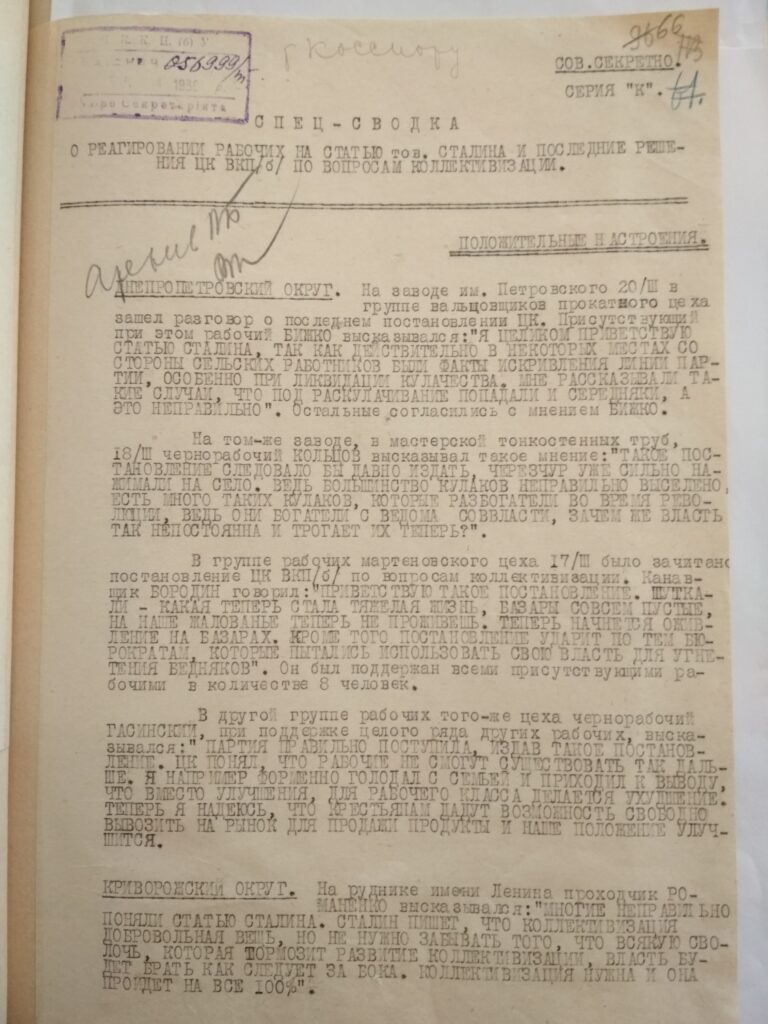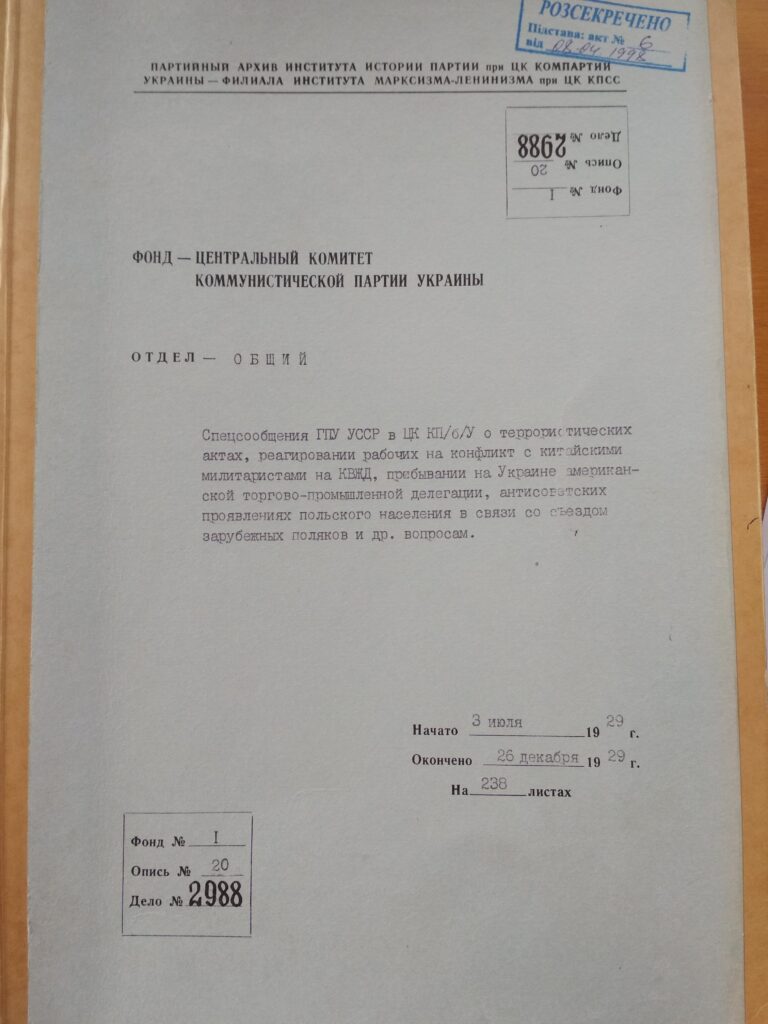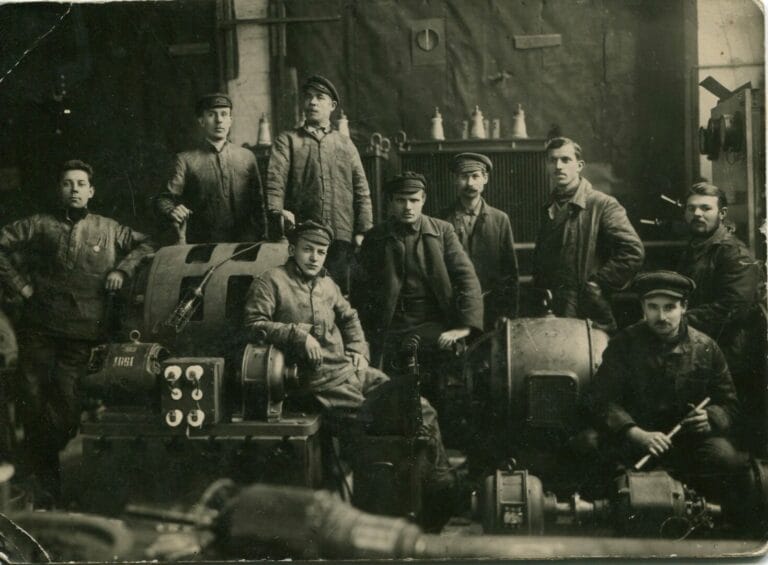Related sources:
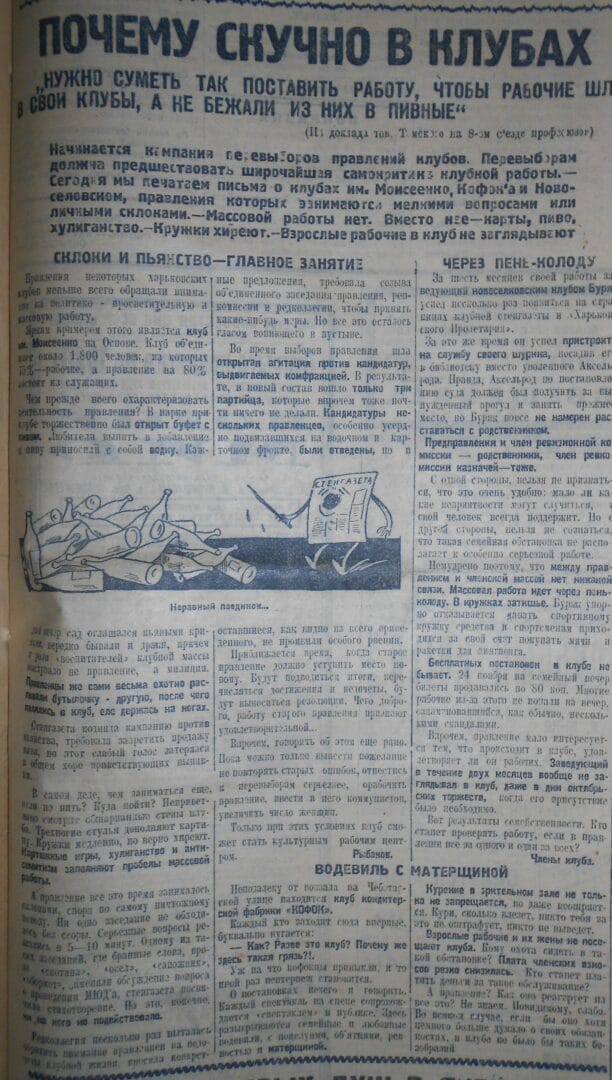
Report by workers’ correspondents on the state of cultural and educational work in Kharkiv clubs in the 1920s
This newspaper article comprises reports by workers’ correspondents on the state of cultural and educational activities in Kharkiv clubs. The authors critique the process of electing club boards, offer recommendations on conducting them, highlight nepotism in position distribution, and denounce the use of alcohol and smoking in club premises. The Soviet government endeavored to transform workers’ clubs into model leisure facilities. Soviet leisure, as envisioned, encompassed active political engagement, self-education, and self-improvement for club attendees. However, visitors often favored traditional forms of recreation, and cultural workers frequently approached their duties perfunctorily. Clubs aimed to strike a balance between propaganda and entertainment, though maintaining it proved challenging. Hence, such reports were commonplace in periodicals....
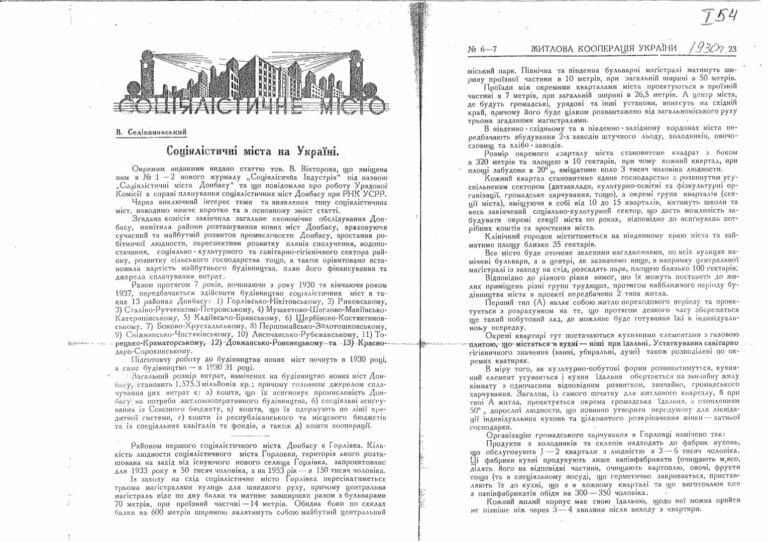
A Socialist Town near Horlivka in Donbas Region, Ukraine: An Article from 1930
The article outlines the key features of a socialist town near Horlivka in Donbas region. This initiative mirrors similar projects undertaken in Kharkiv (“New Kharkiv”) and Zaporizhzhia (“Sixth Village”). The aim of the project is to maximize the socialization of workers’ daily lives. To achieve this goal, there were plans to develop an extensive network of catering and social infrastructure, including nurseries, kindergartens, clubs, and more. Designers envisioned these architectural solutions to alleviate women from household chores and involve them in community service or industry. The socialist town project exemplifies Soviet standardized housing construction, with neighborhoods, residential buildings, and interior designs intended to shape a new socialist lifestyle for its residents. Although such...
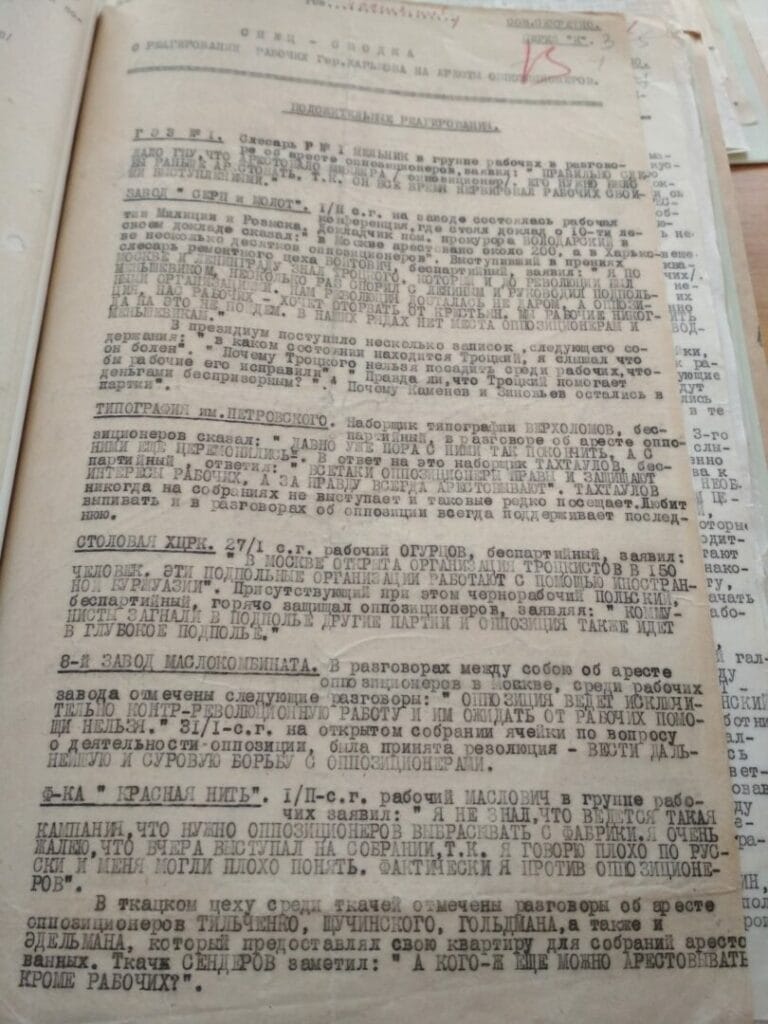
Kharkiv workers on the arrests of Soviet oppositionists in 1929
This document highlights the emergence of a totalitarian regime in the Ukrainian SSR at the grassroots level. In January 1929, J. Stalin emerged victorious over Leon Trotsky in the internal power struggle and opted to exile him from the USSR. Subsequently, there was a wave of arrests targeting supporters of the Trotskyist opposition or those perceived as such by the authorities. This crackdown extended to various enterprises in Kharkiv, the capital of the Ukrainian SSR at the time. The text captures the workers’ reflections on the government’s actions, their views on Trotsky, as well as the prevalence of anti-Semitic sentiments, among other topics. Discussions among workers at Kharkiv’s factories revolved around the arrests...

“Proletarian Journey” in Soviet Ukraine by Fred E. Beal, 1937
Fred Beal’s memoir, A Proletarian Journey: New England, Gastonia, Moscow, was published in New York in 1937. Beal, an American textile worker deeply involved in the labor movement and trade union organizing, resided in the socialist city of “Novyi Kharkiv” [New Kharkiv] from 1931 to 1933, which was established for workers of the Kharkiv Tractor Plant. This city served as a foreign enclave, hosting up to 800 workers and their families. In 1933, prompted by his experiences, Beale published a propaganda pamphlet in English titled Foreign Workers in a Soviet Tractor Plant: A Pictorial Survey of the Life of Foreign Workers and Specialists During the Period of Socialist Construction 1931-1933 (M-L: Iskra revolutsii,...
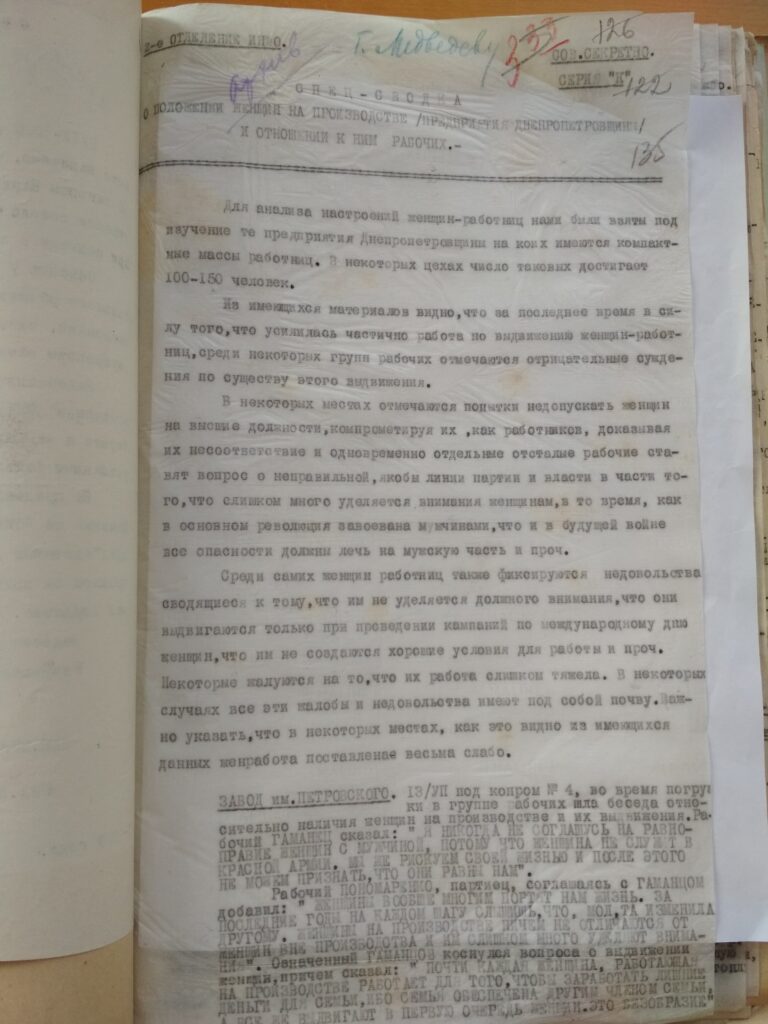
Special Report on Women’s Conditions in Soviet Industry (Dnipropetrovsk Region), 1929
This document contains workers' reflections on the Soviet policy of involving women in manufacturing. The authorities intentionally collected them [reports] in order to enable a more realistic assessment of the current domestic political situation. The study of such reports became possible after Ukraine gained independence, as they were all classified during the Soviet era. Analysis of this source will allow us to see the implementation of Soviet gender policy in industry on a daily basis. The text describes the problems that women faced at work: prejudiced attitudes of men, difficult working conditions, pay inequality, the declarative nature of changes in the status of Soviet women, etc. The document records men's reactions to women's...
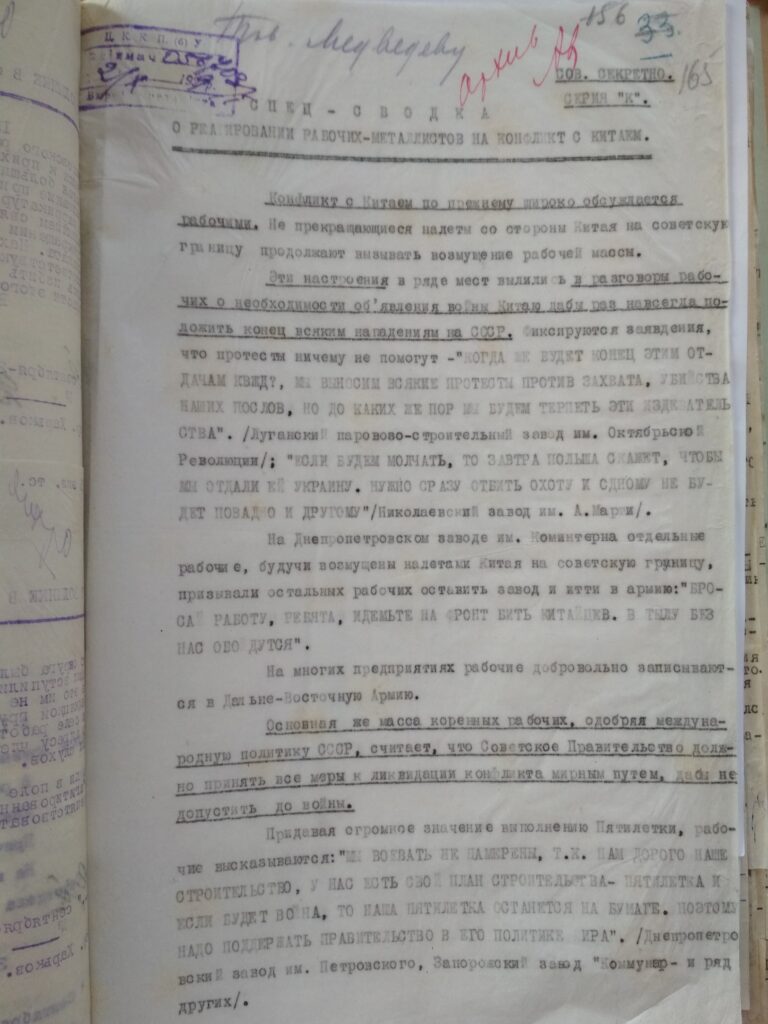
Reaction of the USSR workers to the Soviet-Chinese conflict in July-December, 1929
The presented report shows the reaction of population in the USSR to the Soviet-Chinese conflict in July-December, 1929 over the control on Chinese Eastern Railway. The text includes opinions expressed by workers from Ukrainian industrial plants and mines in their private conversations, and in the work teams. They illustrate a wide range of opinions dominating in society: from ardent support of the Soviet Union in the conflict, and calls to go to the front, to denying the need for confrontation. It must be highlighted that discussions of the condition and provisions in the Soviet Army would often end up in reflections about the causes of internal economic problems in the country. Many workers...
Show more
Collapse all
The Soviet government aimed to profoundly transform the styles and structures of people’s everyday lives, encompassing housing, leisure, and work. Particularly ambitious projects were conceived and executed during the 1920s and 1930s. Workers were at the forefront of Soviet social policy, with the Bolshevik Communist Party depicted in Soviet discourse as the avant-garde of the proletariat, primarily serving the interests of the working class. Did these ideas correspond to practice, and at what cost were they realized? This will be discussed in the module by historian Roman Liubavskyi.


